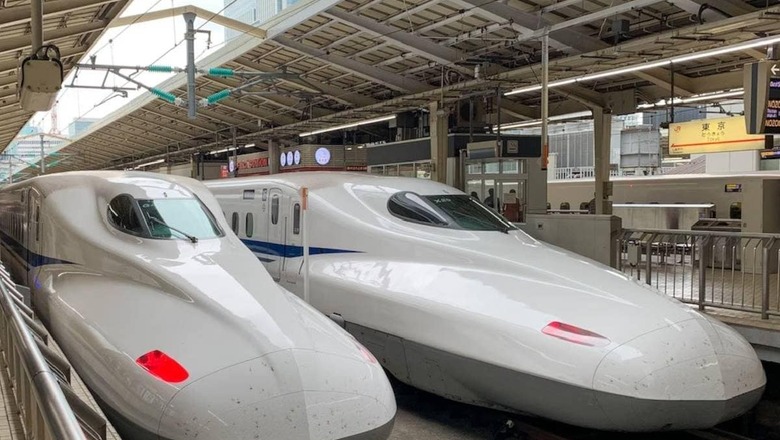
views
The Mumbai–Ahmedabad bullet train project is gaining momentum as the National High Speed Rail Corporation Ltd (NHSRCL) recently handed the construction work to the Dineshchandra-DMRC joint venture.
The scope of work for the depot, as outlined by NHSRCL, encompasses civil construction, inspection sheds, maintenance depot installation, testing, and commissioning of cutting-edge maintenance facilities.
NHSRCL spokesperson Sushma Gaur highlighted the project’s aim to set a new standard for maintenance in India, drawing inspiration from Japanese Shinkansen train depots. Gaur noted, “These facilities will incorporate state-of-the-art, environment-friendly features,” as reported by TOI.
Spanning approximately 55 hectares, the depot will include provisions for the upkeep and light maintenance of the high-speed trainsets. Initially, four inspection lines and ten stabling lines will be built, with plans for expansion to eight and 31, respectively, in the future.
The depot’s machinery, including a bogie exchange machine, underfloor wheel re-profiling machine, testers and data readers, ultrasonic flaw detectors, and a trainset washing plant, will be sourced from Japan. Additional depots at Sabarmati and Surat in Gujarat are currently under construction.
Notably, the Mumbai-Ahmedabad High-Speed Rail project is integrating water resource management systems in its depots. The Sabarmati depot, for instance, aims to meet its water requirements through the harvesting of rooftop rainwater and borewells.
Moreover, sewage and effluents generated within the depots will undergo treatment and recycling in modern sewage treatment and effluent treatment plants.
This recycled water is expected to fulfill 70 percent of the depot’s water needs. Similar water management systems, including rooftop rainwater and stormwater storage, sewage treatment, and effluent treatment plants, will be implemented in Bhiwandi.



















Comments
0 comment